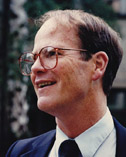

C. Richard Taylor
Harvard University
September 8, 1939 - September 9, 1995
|
Scientific Discipline: Physiology and Pharmacology Membership Type:
Member
(elected 1985)
|
Charles Richard Taylor, a leading integrative physiologist, strove to unravel the intricacies of how animals work by studying them as a whole—by exploiting what he called the “experiments of nature”—with particular emphasis on animals’ energetics and efficiency of locomotion. Over the course of his career, Taylor developed a unique research strategy, using the tools of comparative physiology and exploiting nature’s diversity, to discover unifying principles of biological adaptation to variable life conditions. His work was particularly fruitful in connecting related results obtained by reductionistic research, be it morphological, biochemical, or physiological, into an integrated view of systems physiology.
Taylor received his bachelor’s degree from Occidental College in 1960, whereupon he entered Harvard University’s Department of Biology, obtaining an MA in 1962 and his PhD in 1963. One of his teachers in vertebrate biology was Charles P. Lyman, curator at the Museum of Comparative Zoology, who served as advisor for Taylor’s PhD thesis on "The thermoregulatory function of the horns of Bovidae". This topic arose from the fact that a goat’s horns get hot when it is excited, suggesting they could have a thermoregulatory function. After completion of his graduate studies, Taylor became a research fellow at the museum (1964–1968), where he continued his collaboration with Lyman. In this position Taylor obtained his first grant from the National Science Foundation, allowing him to embark on large field studies in Kenya on animals’ thermoregulation.
During 1968–1970, Taylor joined comparative physiologist Knut Schmidt-Nielsen at Duke University as a research fellow, where, among other things, Taylor became deeply involved in studies on scaling—the effect of body size on organismic functions such as running at different speeds. He was recruited back to Harvard in 1970 through his appointment, at the age of 31, as director of the Museum of Comparative Zoology’s Concord Field Station and as an associate professor of biology. Taylor remained at Harvard for the rest of his career, ultimately becoming the Alexander Agassiz Professor of Zoology and the first occupant of the Charles P. Lyman Chair in Environmental Physiology.

